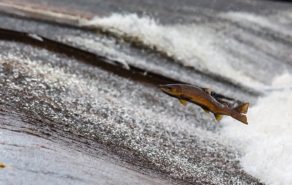“When we live in accordance with universal laws and in harmony with the natural world, we can best tap the resourceful energy of human creativity. Innovative leadership focuses that energy to find new and inventive approaches to solve problems and create new opportunities.” –Dr. Hyun Jin Preston Moon
We may all be equally affected by the elements of our natural world, but it is the code we live by that determines how we react to our environment. It takes innovation to come up with creative solutions that address the challenges at hand.
Nature can be seen as one of the greatest classrooms for people to experience self-discovery and provide inspiration for innovative solutions to the challenges humanity faces every day. In facing harsh elements, people must adjust to survive, using critical thinking and reflection to take action.
Innovation alone, however, is only one aspect of the new kind of leadership desperately needed today.
“A true leader’s position should not reflect any self-serving personal or political interests but benefit ‘the greater good’ of humanity. The moral aspect of leadership provides a vision rooted in universal aspirations, principles and values, while the innovative aspect of leadership provides the methods through which the vision can be realized. They are like two sides of a coin.” -Dr. Hyun Jin Preston Moon
No matter what our background, ethnicity, religious or politic beliefs, as human beings sharing this planet, our lives are governed not just by the natural laws surrounding us, but also by the principles that guide our everyday actions and reactions. This moral aspect of leadership provides focus and purpose behind innovative solutions that address the greater good of communities and societies.
 Through our experiences with nature, we have the opportunity to reflect on these natural laws, including the most basic: the cycle of life and death. From the changing of seasons to the habits of wildlife, there are many examples. Salmon is one example of a species that plays a key role in spreading nutrients between the oceans and rivers, ensuring healthy future ecosystems. New fish migrate from rivers to the sea, where they spend the majority of their lifespan before returning again to riverbeds to spawn. This journey back to freshwater drains the salmon of fat and muscle storage. After preparing a bed for the fertilized eggs, both the male and female salmon die, supplying the river habitat with the nutrients it will need to survive so that future generations may continue the cycle.
Through our experiences with nature, we have the opportunity to reflect on these natural laws, including the most basic: the cycle of life and death. From the changing of seasons to the habits of wildlife, there are many examples. Salmon is one example of a species that plays a key role in spreading nutrients between the oceans and rivers, ensuring healthy future ecosystems. New fish migrate from rivers to the sea, where they spend the majority of their lifespan before returning again to riverbeds to spawn. This journey back to freshwater drains the salmon of fat and muscle storage. After preparing a bed for the fertilized eggs, both the male and female salmon die, supplying the river habitat with the nutrients it will need to survive so that future generations may continue the cycle.
Moral and innovative leadership at its essence is the idea of using power, creativity, and energy for the sake of improving the lives of others. When individuals live with transparency and selflessness in their positions of influence, living by a code that puts the needs of others before their own, they build trust and respect. This will inevitably lead to infinite potential for further influence, creating a chain reaction of positive change.

